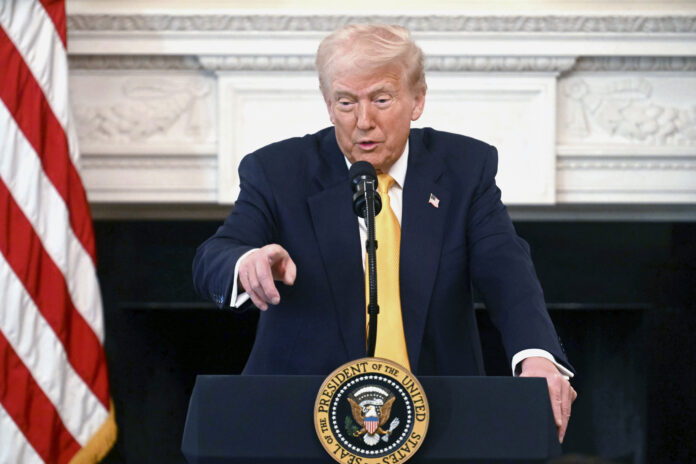President Donald Trump dropped a bombshell Friday night by firing Air Force Gen. CQ Brown Jr., chairman of the Joint Chiefs of Staff. The sudden move sent shockwaves through Washington, catching many off guard. Brown had served in the position for just 16 months, making his tenure one of the shortest in history. His abrupt dismissal signaled a major shake-up in Pentagon leadership, raising questions about Trump’s next steps for the military’s top brass.
Trump’s swift replacement pick
Trump wasted no time in naming Brown’s replacement. He announced Air Force Lt. Gen. Dan “Razin” Caine as the new chairman. Caine, a former CIA military affairs director, brings extensive experience in national security and combat operations. His nomination, however, still requires Senate approval, setting the stage for a potentially contentious confirmation battle. The quick decision highlights Trump’s determination to reshape military leadership according to his vision.
A surprising goodbye
Despite the abrupt firing, Trump took a moment to acknowledge Brown’s service. He praised him as “a fine gentleman and an outstanding leader,” expressing gratitude for his 40 years of dedication. Brown had just been at the southern border before receiving the shocking news, making the timing even more surprising. Many in Washington are speculating on what led to his removal and whether internal disagreements played a role in Trump’s decision.
Historic tenure cut short
Brown made history as only the second Black general to hold the prestigious position of chairman of the Joint Chiefs of Staff. His tenure was relatively brief, but he remained a key figure in military strategy and decision-making. In December, he was seen sitting next to then-president-elect Trump at the Army-Navy football game, a moment that now feels like a distant memory. His sudden exit marks another dramatic shift in Trump’s approach to military leadership.
Trump praises Caine’s military prowess
Trump lauded Caine’s expertise, calling him a “warfighter” and a seasoned national security professional. The president credited him with the “complete annihilation” of the ISIS caliphate during his first term. Caine’s deep involvement in special operations and intelligence work makes him a formidable choice for the role. His nomination suggests that Trump is prioritizing battlefield experience and aggressive military strategy in his administration’s defense policies.
Defense Secretary supports the move
Secretary of Defense Pete Hegseth quickly threw his support behind the decision. He described Caine as “exactly the leader we need to meet the moment” and expressed confidence in his ability to guide the nation’s military. Hegseth also took a moment to acknowledge Brown’s contributions, though his past statements suggest he was never fully supportive of Brown’s leadership. The transition marks a clear shift in the Pentagon’s direction.
Hegseth’s past criticism of brown
Hegseth had previously voiced strong criticism of Brown, questioning his qualifications. In a podcast last November, he openly called for Brown’s removal. In one of his books, he raised the question of whether Brown was chosen for his skill or because of his race. These controversial remarks stirred debate, with some accusing Hegseth of undermining Brown’s achievements. Despite this history, Hegseth did give Brown a nod of approval following a face-to-face meeting last month.
High-level firings continue
Brown was not the only high-ranking military officer dismissed that night. Trump also fired Chief of Naval Operations Adm. Lisa Franchetti and Air Force Gen. Jim Slife, further shaking up military leadership. Hegseth confirmed their removals in a statement, reinforcing the notion that Trump is taking decisive action to restructure the Pentagon. The mass firings have left many wondering who else might be next on the chopping block.
Trump’s military shake-up is unlike anything seen in recent years. With Caine’s confirmation pending and other top positions suddenly vacant, the Pentagon is undergoing a dramatic transformation. The administration’s new direction is becoming clear—Trump wants military leaders who align with his vision of strength and dominance. The coming weeks will be crucial as the Senate debates Caine’s nomination and the Pentagon adjusts to its rapidly changing leadership landscape.




